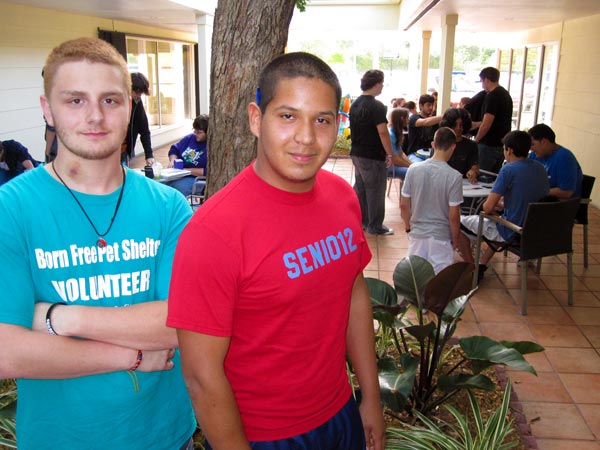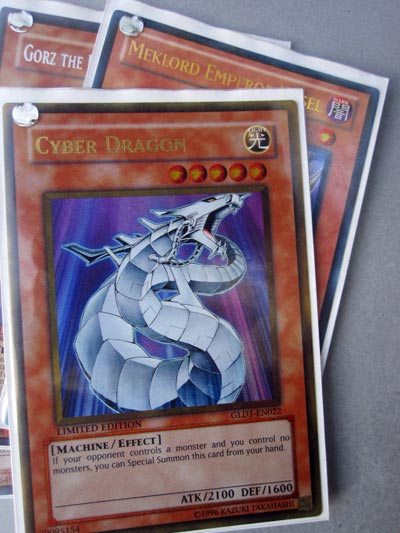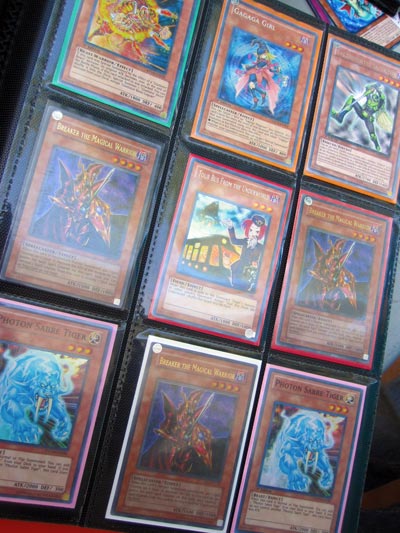Japanese Yu-Gi-Oh! Invasion
/Outside the Starbucks at Suniland Shopping Center, the invasion occurs. Zachary Bauman, 18, a Palmetto High School Junior and Juan Leon, 18, a Senior, organize and run the unofficial Palmetto High School Yu-Gi-Oh! club.

Zachary Bauman (left) and Juan Leon are Yu-Gi-Oh! judges and tournament organizers.
Yu-Gi-Oh! is a Japanese trading card game that began in 1999. Today it is the world’s most popular trading card game. Based on an anime called Yu-gi-oh, the card game pits ‘monsters’ against each other, much like the TV and movie series. This is a new generation's Dungeons and Dragons or Magic: The Gathering.
When the uninformed walk by, there is no escaping curiosity. What the heck are these kids up to? It is also intriguing to listen to the players talk. The game has a language all its own. When asked to explain, Zach said, "Mil means to send the top card of your deck to the graveyard and pop means to kill a monster or destroy it, not by battle but by an effects." Perfectly clear, right? But still, when you watch these kids play, there is an infectious energy. They are being social, intellectual and most of all, they're having good, clean fun.

Scoring and play is based on a star, attack, and defense levels. Each card clearly displays a numerical value for those, but then things get intricate. Each card has an 'effects' paragraph, which explains characteristics of the monster depicted on the card. Cards turned vertical are attack position, while horizontal provides defense. Zach led me down a particular turn, "If your sword is longer than theirs and you swing hard, you can break their shield. You might not hurt the creature, but you do damage."
Juan, who has played this game for a dozen years, tells me it would take a noob (new player) about a month to get the flow of the game. And, he adds, "It's expensive. Cards start at around 50 cents, but can reach $200 to buy. The strategically better cards are rare to come by (fewer of them are produced by the game maker) and therefore cost more." The playing cards are not your run of the mill 52-card deck. To the contrary, a deck can have 40-60 cards and players create their stack for each game to try to arm themselves to beat their particular opponent. Strategy and consistency start well before a match even begins.

The elimination tournaments are held each Friday after school. Players play an opponent in a three game match, which last around 25 minutes. Win and move on. At the end of each tournament, you have a winner and the organizer has statistically ranked each game. A win is more than a win if you beat a strong player, and the converse holds true. Judges are designated for tournaments to definitively rule when players disagree with how two cards should compete against each other. Judges rules are final, and they use the official website to make the correct call.
There are regional and national tournaments as well. All along, there are cash prizes and the ability to trade cards. As the game's creator, Konami, prints more of certain cards, their rarity goes down and so does their value. It's an amazingly well thought out ecosystem.
Zach Bauman, who enthusiastically encourages others to join him in play, says “When you play, you’re in people's faces, get to travel, meet new people, be social and be intellectual and think. It's far more entertaining than playing video games. When mathematics, semantics, logic, and strategic thinking are involved, you brain expands.”

